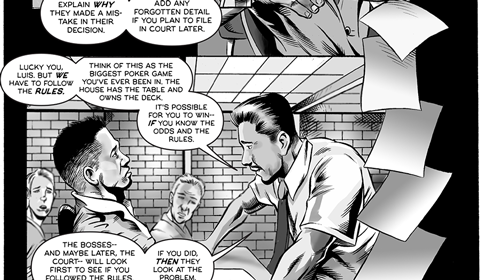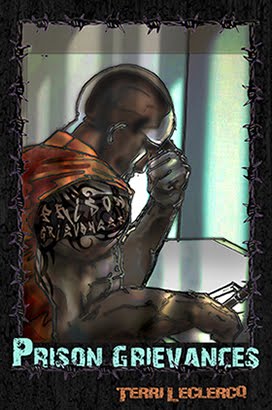No Excuse for Cruel and Unusual Prisoner Punishment
Posted August 25th, 2012
BY DIANE DIMOND
If you are reading this anywhere in America, you know firsthand that this summer has been a record-breaking sizzler. We could be living though the hottest summer season ever.
Think about what you’ve done to keep cool. You’ve turned on your air conditioner, or (if you don’t have one) maybe you’ve gone to the movies to cool off. You probably drink lots of ice-cold beverages or jump into a swimming pool or cool shower. Perhaps, like my friend Lester, you drench a kitchen towel, twist it into a U shape and plop it in the freezer to hang around your neck when working outside.
Well, imagine you couldn’t do any of those things. Imagine you were isolated in a 10-foot-by-12-foot space with no windows to open up to catch a cooling breeze. You had no fan, no relief and no escape.
That’s what countless prisoners in America have had to endure this long, hot summer. In the past, their situation has proven deadly. In Texas, a lawsuit was filed after 10 inmates died from heat-related causes last summer. All were held in cellblocks without air-conditioning. The suit, filed by the Texas Civil Rights Project, focuses on what was called the “wrongful death” of inmate Larry McCollum.
Even though the federal courts have ruled that temperatures over 90 degrees violate the constitutional rights of an inmate, the Hutchins State Jail in Dallas where McCollum died of heat stroke registered an indoor heat index of almost 130 degrees. After he collapsed last July and was taken to the hospital, doctors found McCollum’s body temperature still registered over 109 degrees!
The autopsy on the 58-year-old prisoner listed his cause of death as living “in a hot environment without air conditioning.” One unnamed Texas corrections official was quoted saying about his prisoners: “I’m supposed to be watching them. I’m not supposed to be boiling them in their cells.”
It’s not just Texas where inmates are suffering and, in my opinion, being subjected to cruel and unusual punishment. In sunny Florida, only 10 of the 140 state-run prisons have air conditioning. But in those facilities with air, the cool sections are limited to just a few. It is somehow ironic that in a state where they have prison classes to teach inmates how to install and maintain air conditioners there aren’t any in the vast majority of their oppressively hot cellblocks.
In Chicago, this summer’s life-threatening heat is the worst they’ve seen in more than a century. In the lockups that do have air conditioners, the units are reported to be breaking down from almost constant use. Add to that an outbreak of bedbugs within the system this year, and both inmates and prison personnel are left to face a duel threat — unsanitary conditions and heat exhaustion.
The union representing prison guards says the situation has create “extreme fatigue and dangerous conditions … a recipe for disaster.” It’s a reminder that it is not just prisoners who are affected by the extreme heat, it’s also prison personnel. (At a prison near Rosharon, Texas, earlier this summer, a 58-year-old corrections official fainted, and the hospital ruled it was from heat exhaustion.)
In Iowa, cooling systems have kept many of the 8,300 inmates comfortable this scorching summer. But taken together the Mount Pleasant and Clarinda Correctional Facilities and the Anamosa State Prison have close to 1,900 inmates who have no air conditioning at all. In the prison at Mitchellville, where another 547 inmates live, there is no cool air in any of the older sections of the complex.
Imagine having to endure this summer trapped in a small, confined, almost airless space. We have strict laws against leaving a child or an animal in a hot, enclosed car. Put aside for a moment the crime committed that caused the prisoner to be incarcerated, and ask yourself: Shouldn’t we also care about human beings confined in stifling, life-threatening conditions? Of course we should.
Officials in states across the nation say there simply isn’t enough money in their budgets to retrofit all prisons with central air conditioning. So for now, they combat the threat of possible death by heat by catering, first, to those inmates with health problems (like diabetes and high blood pressure) and, second, to those locked up in the hottest sections of the prison. Electric fans, ice and water are being handed out to prisoners across the nation much more frequently than in years gone by.
I couldn’t find a reported death of an inmate from heat exhaustion so far this summer. But that doesn’t mean some prisoners aren’t still being held in inhumane conditions. Who is out there taking the temperature inside every prison and making sure it doesn’t go over the court-mandated 90 degrees? Nobody, that’s who.
Look, I understand there are some people who think that once a criminal is convicted they should lose all their constitutional rights. In other words, if life is tough on the inside, so be it. But it’s never been the American tradition to treat our own people worse than we would treat an animal. If climate change means every summer will be increasingly brutal, we better figure out a way to fix this — or there could be a flood of wrongful death suits to pay.
Rockland resident Diane Dimond is a syndicated columnist, author, regular guest on TV news programs, and correspondent for Newsweek/Daily Beast. Visit her at www.DianeDimond.net or reach her via email Diane@DianeDimond.net.
Posted August 25th, 2012
BY DIANE DIMOND
If you are reading this anywhere in America, you know firsthand that this summer has been a record-breaking sizzler. We could be living though the hottest summer season ever.
Think about what you’ve done to keep cool. You’ve turned on your air conditioner, or (if you don’t have one) maybe you’ve gone to the movies to cool off. You probably drink lots of ice-cold beverages or jump into a swimming pool or cool shower. Perhaps, like my friend Lester, you drench a kitchen towel, twist it into a U shape and plop it in the freezer to hang around your neck when working outside.
Well, imagine you couldn’t do any of those things. Imagine you were isolated in a 10-foot-by-12-foot space with no windows to open up to catch a cooling breeze. You had no fan, no relief and no escape.
That’s what countless prisoners in America have had to endure this long, hot summer. In the past, their situation has proven deadly. In Texas, a lawsuit was filed after 10 inmates died from heat-related causes last summer. All were held in cellblocks without air-conditioning. The suit, filed by the Texas Civil Rights Project, focuses on what was called the “wrongful death” of inmate Larry McCollum.
Even though the federal courts have ruled that temperatures over 90 degrees violate the constitutional rights of an inmate, the Hutchins State Jail in Dallas where McCollum died of heat stroke registered an indoor heat index of almost 130 degrees. After he collapsed last July and was taken to the hospital, doctors found McCollum’s body temperature still registered over 109 degrees!
The autopsy on the 58-year-old prisoner listed his cause of death as living “in a hot environment without air conditioning.” One unnamed Texas corrections official was quoted saying about his prisoners: “I’m supposed to be watching them. I’m not supposed to be boiling them in their cells.”
It’s not just Texas where inmates are suffering and, in my opinion, being subjected to cruel and unusual punishment. In sunny Florida, only 10 of the 140 state-run prisons have air conditioning. But in those facilities with air, the cool sections are limited to just a few. It is somehow ironic that in a state where they have prison classes to teach inmates how to install and maintain air conditioners there aren’t any in the vast majority of their oppressively hot cellblocks.
In Chicago, this summer’s life-threatening heat is the worst they’ve seen in more than a century. In the lockups that do have air conditioners, the units are reported to be breaking down from almost constant use. Add to that an outbreak of bedbugs within the system this year, and both inmates and prison personnel are left to face a duel threat — unsanitary conditions and heat exhaustion.
The union representing prison guards says the situation has create “extreme fatigue and dangerous conditions … a recipe for disaster.” It’s a reminder that it is not just prisoners who are affected by the extreme heat, it’s also prison personnel. (At a prison near Rosharon, Texas, earlier this summer, a 58-year-old corrections official fainted, and the hospital ruled it was from heat exhaustion.)
In Iowa, cooling systems have kept many of the 8,300 inmates comfortable this scorching summer. But taken together the Mount Pleasant and Clarinda Correctional Facilities and the Anamosa State Prison have close to 1,900 inmates who have no air conditioning at all. In the prison at Mitchellville, where another 547 inmates live, there is no cool air in any of the older sections of the complex.
Imagine having to endure this summer trapped in a small, confined, almost airless space. We have strict laws against leaving a child or an animal in a hot, enclosed car. Put aside for a moment the crime committed that caused the prisoner to be incarcerated, and ask yourself: Shouldn’t we also care about human beings confined in stifling, life-threatening conditions? Of course we should.
Officials in states across the nation say there simply isn’t enough money in their budgets to retrofit all prisons with central air conditioning. So for now, they combat the threat of possible death by heat by catering, first, to those inmates with health problems (like diabetes and high blood pressure) and, second, to those locked up in the hottest sections of the prison. Electric fans, ice and water are being handed out to prisoners across the nation much more frequently than in years gone by.
I couldn’t find a reported death of an inmate from heat exhaustion so far this summer. But that doesn’t mean some prisoners aren’t still being held in inhumane conditions. Who is out there taking the temperature inside every prison and making sure it doesn’t go over the court-mandated 90 degrees? Nobody, that’s who.
Look, I understand there are some people who think that once a criminal is convicted they should lose all their constitutional rights. In other words, if life is tough on the inside, so be it. But it’s never been the American tradition to treat our own people worse than we would treat an animal. If climate change means every summer will be increasingly brutal, we better figure out a way to fix this — or there could be a flood of wrongful death suits to pay.
Rockland resident Diane Dimond is a syndicated columnist, author, regular guest on TV news programs, and correspondent for Newsweek/Daily Beast. Visit her at www.DianeDimond.net or reach her via email Diane@DianeDimond.net.










